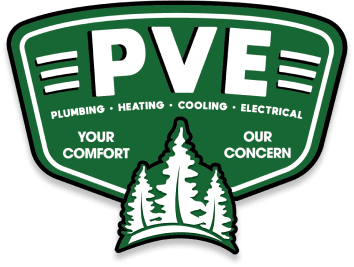Massachusetts has a significant increase in stormy weather during the spring. And if you live in the city of Ware, then you know spring is the peak season for heavy rain and lightning. This time of year is when cold air and warm air masses clash, making the state a prime target for bad storms. Power surges are more likely to occur during one of these storms, and that can cause serious damage to your electrical devices and appliances. Surge protection is a good way to protect your home from the dangers of power surges caused by lightning.
The Basics of a Power Surge
A power surge is when there’s a quick and sudden spike in electricity, far beyond the level of what a particular electrical circuit can handle. A typical electrical circuit in the United States can handle 120 volts. But a power surge can cause anywhere from a few extra volts to thousands of volts over the 120-volt limit. As you can imagine, all that extra power can possibly damage or destroy electrical items in your home.
Lightning strikes are a major cause of power surges. This is why your home is at-risk during heavy storms, particularly during the spring. A direct lightning strike and a lightning strike nearby can cause equal damage by sending a large surge of electricity through your electrical system.
You should note that power surges can occur during any time of the year. So, don’t think it’s only an issue during stormy weather. Power surges can occur when the power comes back on following an outage. Surges can also happen when large appliances like refrigerators or HVAC systems cycle on and off. Faulty wiring can cause surges as well.
Surge Protection Does Matter
Electricity can cause a great deal of damage. If you’ve ever seen a tree that’s been struck by lightning, then you know it’s a powerful force of nature. Now, imagine if all that power went into your electrical system and into your electrical outlets. But even several small surges can eventually wear down electronics. That would put anything plugged into an outlet at risk of getting damaged or destroyed, including your expensive televisions, appliances, gaming consoles, and computers.
Benefits of Surge Protection
There are numerous benefits that come with protecting your home from power surges. Some of these include:
- Extending the life of electronics
- Avoiding expensive repairs or replacements
- Keeping devices functioning without interruption
- Reducing power surge fire hazards
There are usually two main types of surge protectors used in homes. The most common are the plug-in surge protectors. But there are also whole-home surge protectors.
Plug-In Surge Protectors
Plug-in surge protectors are the most common because you can buy them from retail stores. They look like plain power strips, with outlets for several items on one unit. The difference is that they have surge protection capabilities. If you’re interested in this type of protection, make sure to get the correct type of power strip. This type of protector soaks up extra voltage and sends it into the ground, away from your electrical outlets.
What Makes a Good Power Strip Surge Protector?
A significant joule rating matters. The higher this rating, the more power the strip can absorb. Having at least 2,000 joules for your electronics is generally sufficient. Clamping voltage is something else to watch for. This is the amount of voltage that activates the surge protector. A low clamping voltage offers better protection because it kicks in faster than a protector with a high clamping voltage. A protector with 400V or lower is generally good.
It’s not a good idea to use an extension cord with these devices. It’s also not a good idea to plug one power strip into another. A better idea is to choose a device with enough outlets for your needs. These strips usually have anywhere from three to 24 outlets. But, just because you have lots of outlets doesn’t mean you should use them all. Take the total wattage of your devices into account.
Another tip is to choose a protector with a built-in indicator light. When the light is on, that means the protector is working. If the light goes out, that means you’re no longer protected.
Power strip surge protectors can only protect items that are plugged into the strip. That means you need to place this type of strip near the items you want to protect.
Whole-Home Surge Protector
A whole-home surge protector offers protection for your entire home. This type of protector is installed at your main electrical panel, and it stops the power surge before it enters your home’s electrical system.
The whole-home protector monitors the amount of power that flows through the electrical panel. When it detects a power surge at the panel, it stops the panel from sending the high voltage into your electrical circuits. That means the surge never even makes it past the panel to reach the outlets in your home.
The whole-home protector then sends the surge away from the electrical panel. Your home should have a primary grounding wire that will absorb the surge that the protector sends its way. The surge will travel through the grounding wire and into the copper ground rod outside your home. After the surge moves through the ground rod, the surge is absorbed into the soil.
If your home doesn’t have a primary grounding wire or a copper ground rod, an electrician will have to install them. A whole-home surge protector isn’t effective without a primary grounding wire and a copper ground rod.
Unlike the plug-in protector, the whole-home protector works for all hardwired devices in your home. This includes items like HVAC systems, refrigerators, stoves, and washing machines. You can also continue to use plug-in surge protectors in addition to your whole-home surge protector.
Whole-Home Surge Protector Installation
You need a licensed electrician to install your whole-home surge protector. Working with electricity is dangerous, and it requires training, skill, and the proper tools to do the job correctly.
The state of Massachusetts requires a license to perform any electrical work in the state. The Massachusetts Board of State Examiners of Electricians issues these licenses. The state also requires electrical trainees to complete an apprenticeship prior to gaining a license. Installing a whole-home surge protector definitely isn’t a do-it-yourself project.
Surge Protection Tips
We’ve explored the surge protection options you have for your home. But now, here are some tips to help you get the most out of your surge protection.
Keep Expensive Electronics in Surge Protectors
Remember, you can use the power strip type of surge protector along with a whole-home surge protector. You can plug electronics like televisions, computers, and game consoles into the power strip type of surge protector. Just make sure you’re not using a regular power strip with no surge protection capabilities.
Unplug Devices During Bad Weather
Surge protection is great to have, but it also doesn’t hurt to unplug non-essential appliances and electronics during a bad storm. This is the ultimate way to protect your items from potential damage from a power surge caused by lightning.
Contact the Surge Protection Specialists
When it’s time to get surge protection for your home, it’s a good idea to trust the professionals at Pioneer Valley Environmental. Homeowners living in Ware, MA can reach out to our professional electricians for installation and maintenance for whole-home surge protectors and other electrical needs. Anyone with questions or concerns should contact us today!








